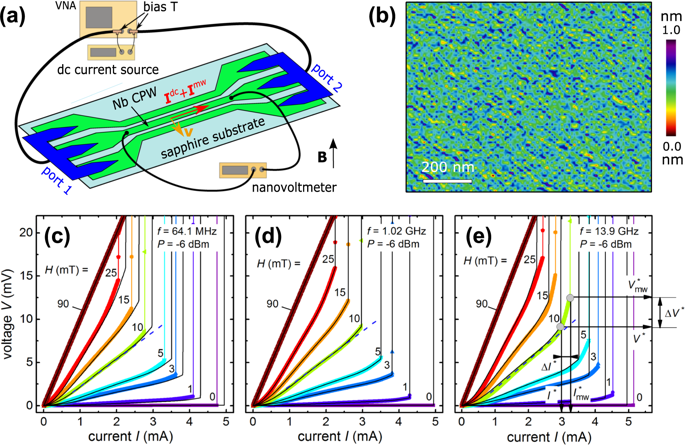Communications Physics ( IF 5.5 ) Pub Date : 2020-04-02 , DOI: 10.1038/s42005-020-0329-z O. V. Dobrovolskiy , C. González-Ruano , A. Lara , R. Sachser , V. M. Bevz , V. A. Shklovskij , A. I. Bezuglyj , R. V. Vovk , M. Huth , F. G. Aliev

|
Almost any use of a superconductor implies a non-equilibrium state. Remarkably, while a sufficiently high-power electromagnetic field of GHz frequency can stimulate superconductivity, fast motion of magnetic flux quanta (Abrikosov vortices) can trigger an instability abruptly quenching the superconducting state. Here, we show that such dynamical quenching of the vortex state in Nb thin films can be advanced or delayed by tuning the power and frequency of the microwave ac stimulus added to a dc bias current. The experimental findings are supported by time-dependent Ginzburg-Landau simulations and they can be explained, qualitatively, based on a model of “breathing mobile hot spots”, implying a competition of heating and cooling of quasiparticles along the trajectories of moving fluxons whose core sizes vary in time. In addition, we demonstrate universality of the stimulation effect on the thermodynamic and transport properties of type II superconductors.
中文翻译:

通过微波呼吸移动通量量子冷却超导体
几乎任何超导体的使用都意味着不平衡状态。值得注意的是,虽然GHz频率的足够高功率的电磁场可以激发超导性,但是磁通量量子(Abrikosov涡旋)的快速运动可能会引发不稳定,从而突然淬灭超导状态。在这里,我们表明,通过调节添加到直流偏置电流的微波交流刺激的功率和频率,可以提前或延迟Nb薄膜中涡旋态的这种动态猝灭。实验结果得到了与时间有关的Ginzburg-Landau模拟的支持,并且可以基于“呼吸移动热点”模型定性地解释它们,这意味着沿着其核心的移动磁通量轨迹,准粒子的加热和冷却竞争大小随时间而变。此外,



























 京公网安备 11010802027423号
京公网安备 11010802027423号